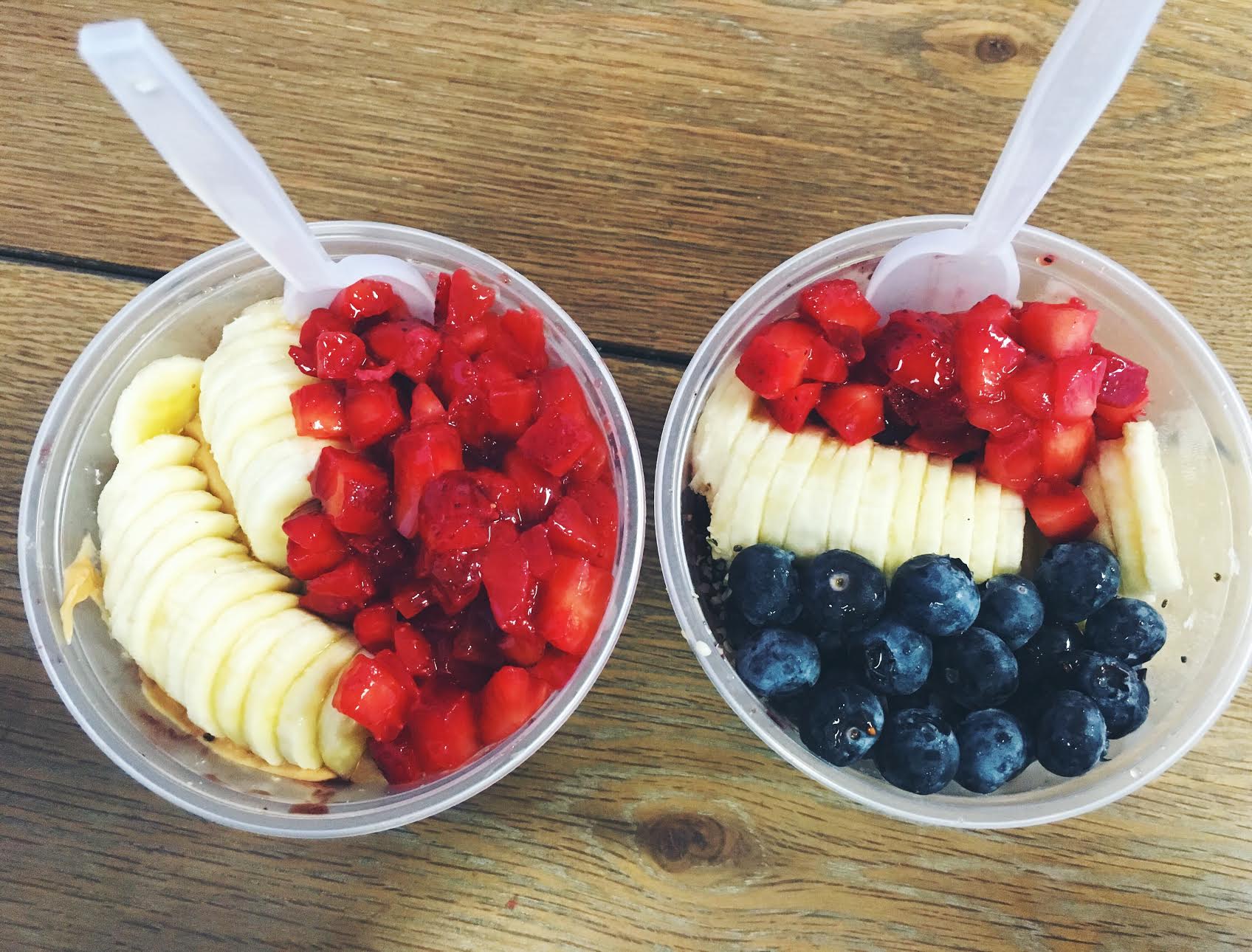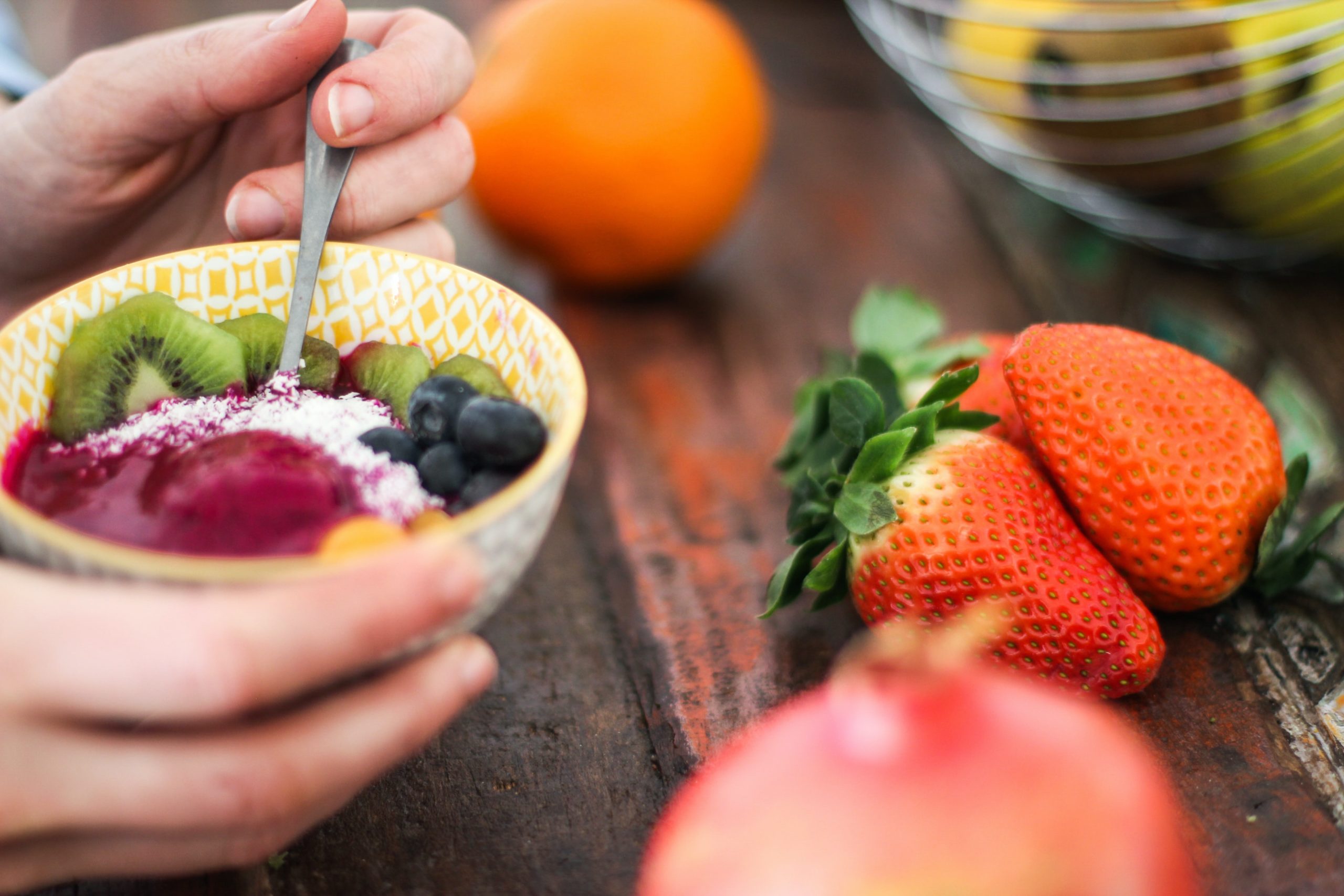Do you love sweet and fruity snacks? Then you have probably tried (or should try!) an acai bowl.
Topped with granola, honey or peanut butter, this Brazilian berry has become the latest American food trend. Even though acai is widely known for its health benefits, is this popular superfood actually nutritious? We debunked the myths and mysteries behind this berry blend to find out.
Facts first: What’s in an acai bowl?
Acai bowls typically have an acai blend that can be garnished with a variety of toppings including bee pollen and other additives. Acai is blended with blueberries, raspberries and other fruits and additives depending on the store.
At Big Island Bowls in Gainesville, owner Kelly Hazouri said the acai blend is made fresh every day with organic apple juice or unsweetened almond milk. Other acai places mix the berries with sorbet to give it a creamy consistency.

What are the health benefits?
Acai is classified as a superfood, meaning it contains a high concentration of nutrients. The berry is full of antioxidants, heart-healthy fats and fiber, according to Mayo Clinic.
Consuming acai can improve blood circulation, help clear skin, lower cholesterol, enhance the body’s immunity and aid in digestion, said Lawrence Clay, owner of Elixir Lounge and Juice Bar in downtown Gainesville.
Acai is also known to be a natural energizer. Hazouri said acai is a protein-based berry high in fiber and free radicals, giving your body all the energy it needs in one bowl.
So, what’s the problem?
Sugar. Despite the berry’s fruity facts and heart-healthy benefits, the bowls are loaded with sugar. Although some of the sugar in the blend is natural fruit sugar, some acai bowl shops add a significant amount of sugar either from apple juice, sorbet or other ingredients.
On average, one acai bowl contains about 70 grams of carbohydrates. This is almost twice the amount of sugar Americans should consume daily, according to the American Heart Association.
Let’s compare
If we compare the sugar content in one acai bowl to some of your favorite sweet treats, you might be surprised.
Acai Bowl of Goodness at Elixir Lounge and Juice Bar: 75 grams of carbs
Venti Caramel Macchiato at Starbucks: 44 grams of carbs
Vanilla Milkshake at Chik Fila: 67 grams of carbs
Oreo McFlurry at McDonalds: 60 grams of carbs
Does this mean you shouldn’t eat acai bowls? No. Indulging in this sweet treat can be healthy if prepared the right way. Avoid sugar additives and carb-loaded toppings. Instead, try unsweetened organic coconut shavings, bee pollen or other nutritious toppings.
Next time you are craving a sweet and fruity treat, find out what the restaurant adds to the blend. This way, you can experience all of the health benefits of acai without the unwanted sugars and calories.
Related articles:
Healthy Dessert Trends To Indulge In On National Dessert Day
Ask The Expert: Maria Rizzo, The Baker!
6 Healthy Reads To Change Your Life For The Better
Carving Or Cooking? We’ll Help You Pick The Perfect Pumpkin

